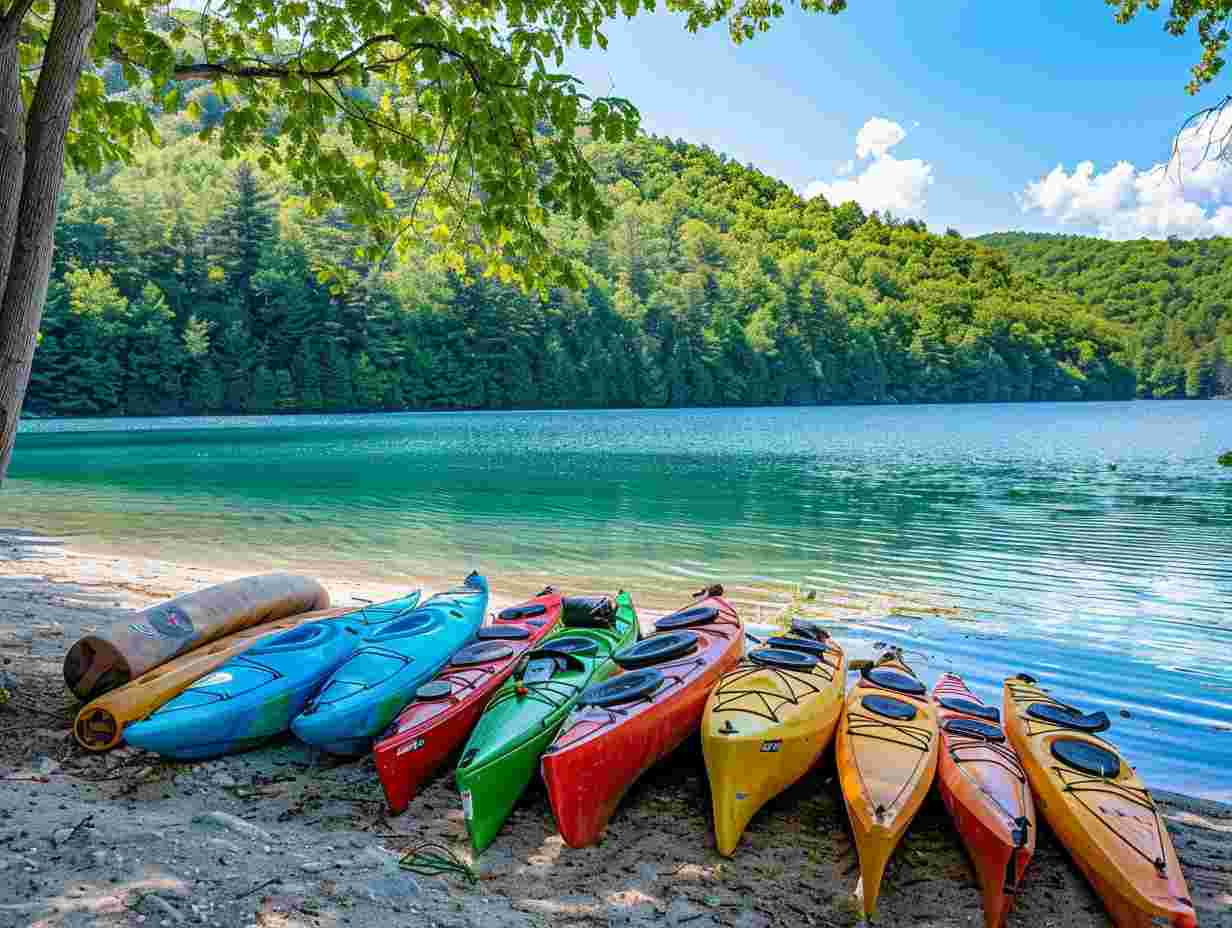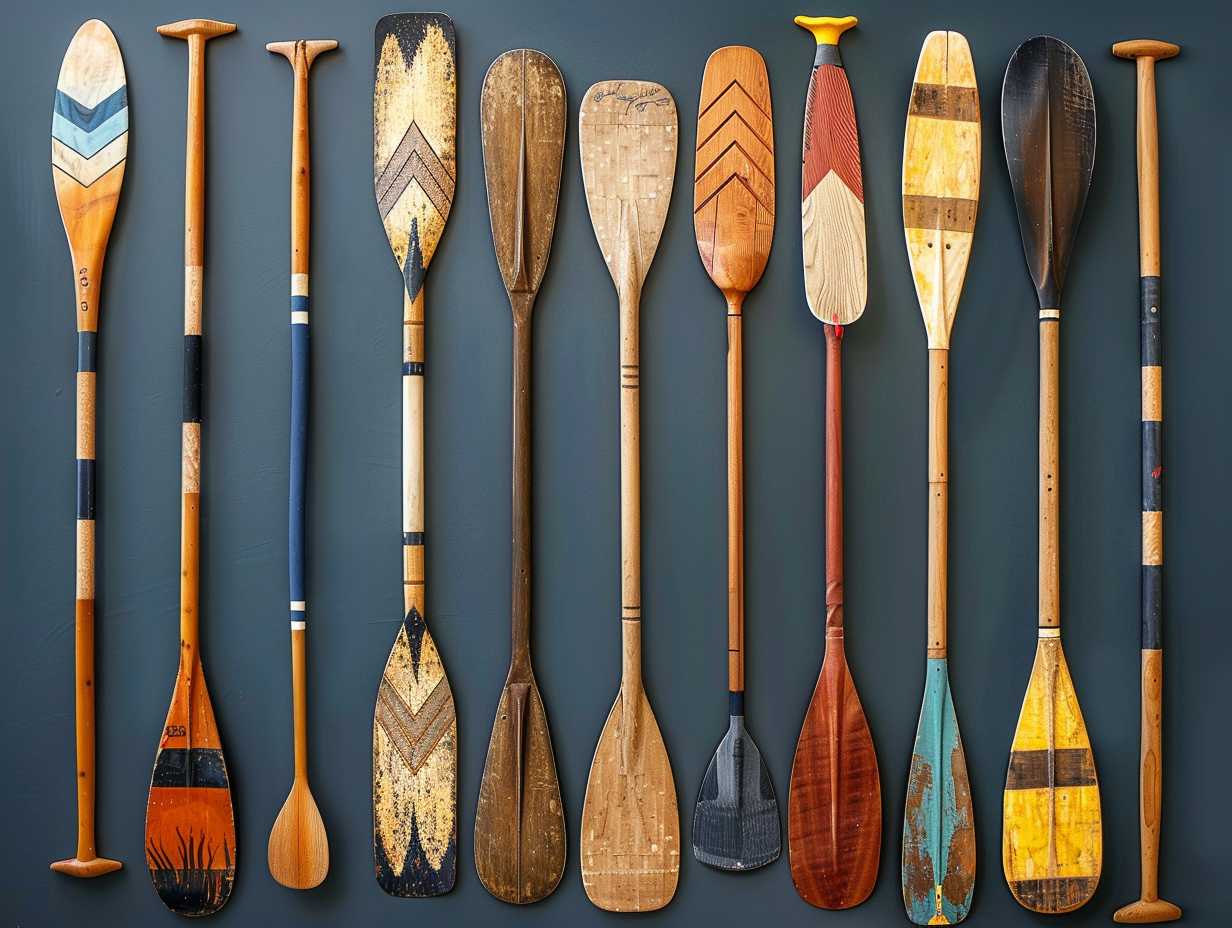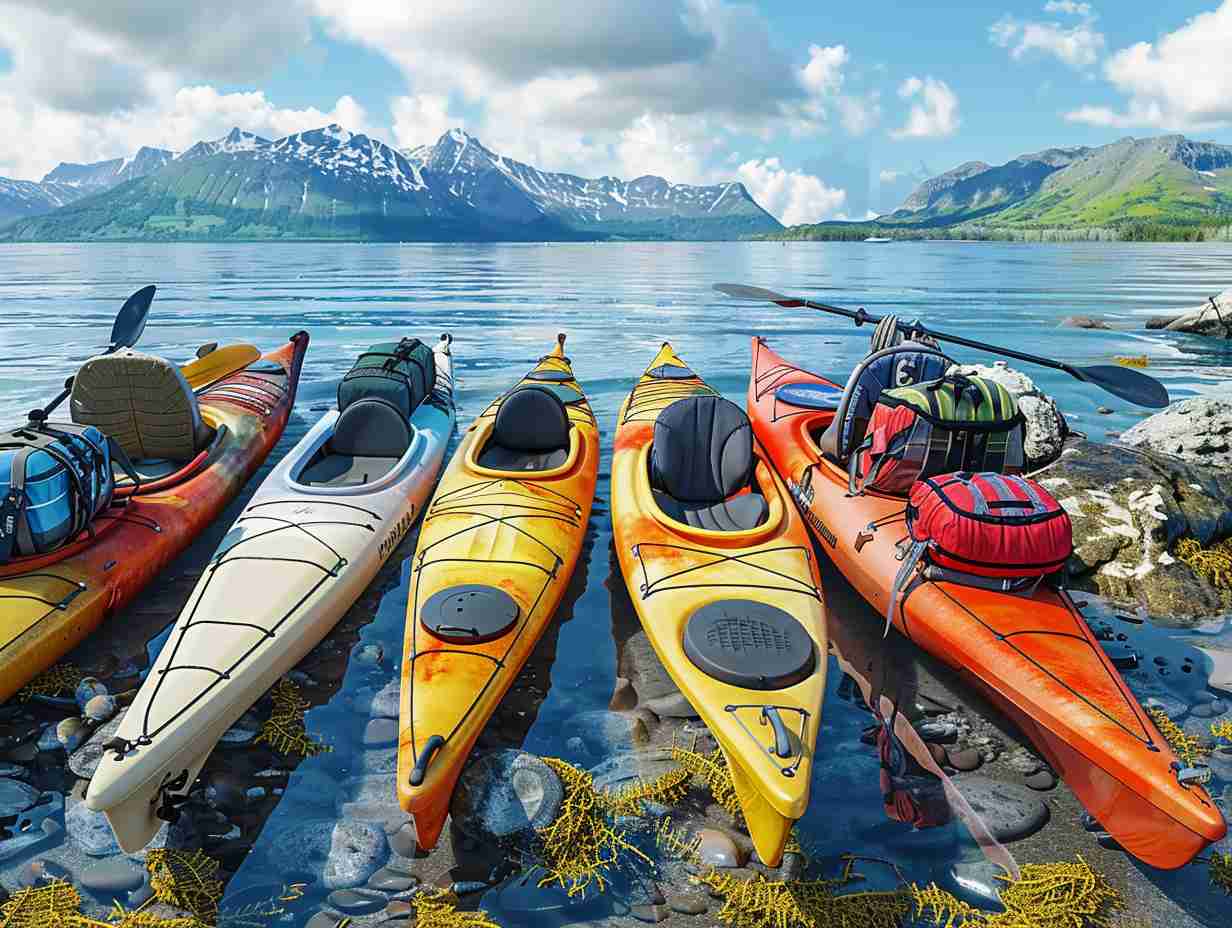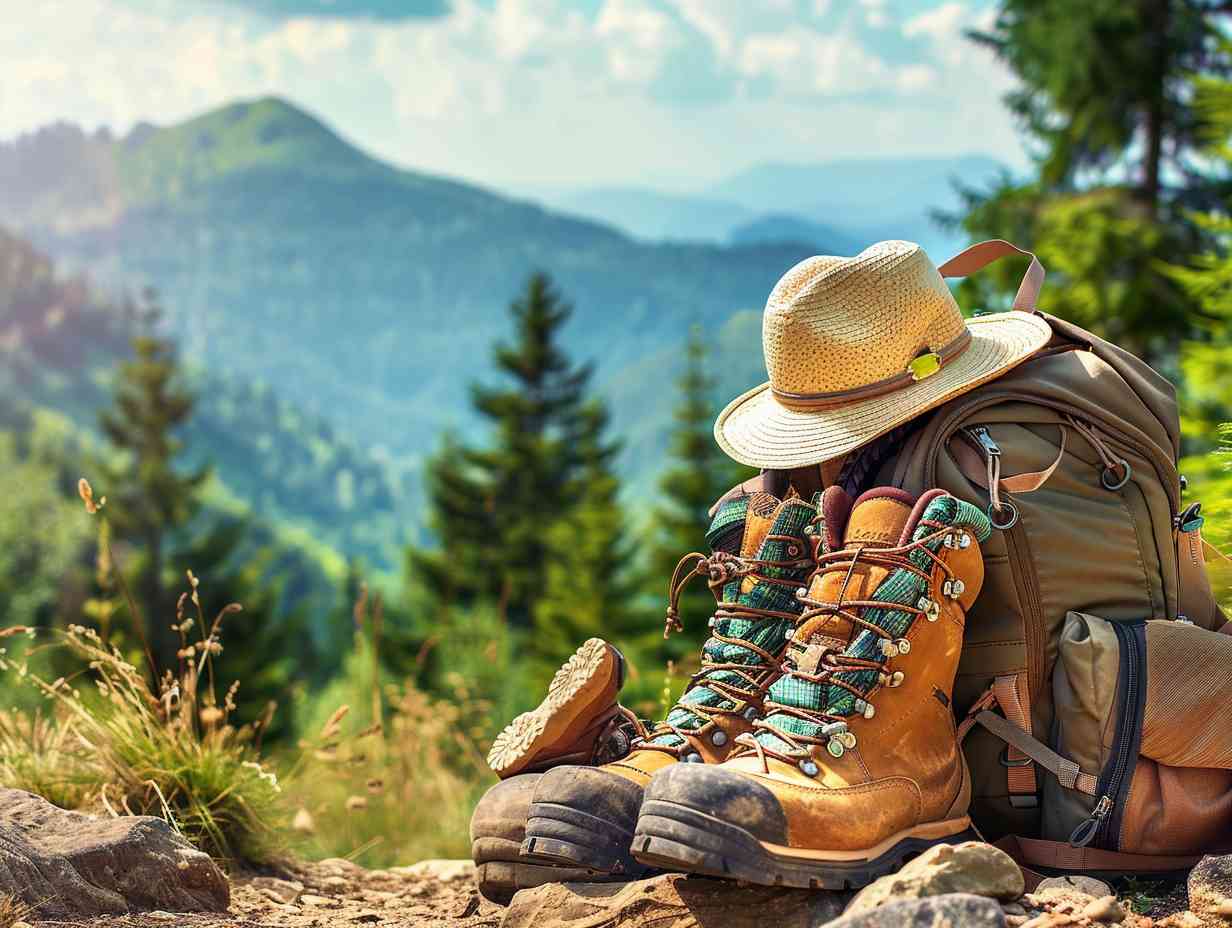
Kayaking and Water Sports Equipment
Table Of Contents
- Key Takeaways
- Essential Kayaking Gear
- Types of Paddles
- Choosing the Right Life Jacket
- Exploring Different Kayak Options
- Must-Have Accessories for Water Sports
- Stand-Up Paddleboarding Essentials
- Safety Gear for Water Activities
- Maintenance Tips for Water Equipment
- Frequently Asked Questions
- Conclusion

When gearing up for your next water adventure, ensuring you have the right equipment can make all the difference. From properly fitting life jackets to choosing the ideal paddle for your skill level, each piece plays an essential role in your safety and enjoyment on the water. Exploring the various kayak options available and selecting the must-have accessories are vital steps. Stay tuned to discover more about the key elements that can enhance your experience on the water.
Key Takeaways
- Essential gear includes life jackets, paddles, waterproof bags, whistles, and safety checklists.
- Choose paddles based on material, blade shape, and shaft design for efficiency and comfort.
- Select Coast Guard-approved life jackets with a snug fit, appropriate buoyancy, and adjustable features.
- Explore kayak options like sit-on-top, sit-inside, touring, whitewater, and fishing kayaks.
- Must-have accessories include PFDs, waterproof bags, whistles, water bottles, and essential safety gear.
Essential Kayaking Gear
Before setting out on a kayaking expedition, make sure you have the essential gear to stay safe and enjoy the water to the fullest. The first item on your checklist should be a properly fitted life jacket. This is essential for your safety on the water.
Next, invest in a reliable kayak paddle. Consider the length based on your height and the type of kayaking you plan to do. Additionally, waterproof bags or cases are vital for keeping your belongings dry. A whistle is a small but important piece of equipment for signaling in case of emergencies.
Types of Paddles

Consider the various types of paddles available to enhance your kayaking experience and suit your specific needs. When choosing a paddle, you’ll encounter differences in materials, blade shapes, and shaft designs.
Fiberglass paddles are lightweight and durable, making them ideal for long trips. Aluminum paddles are more affordable and sturdy, great for beginners or recreational paddling. Carbon fiber paddles are the lightest and provide excellent performance, perfect for advanced kayakers.
Additionally, blade shapes vary from narrow to wide, affecting stroke efficiency. Straight shafts offer simplicity, while ergonomic bent shafts reduce wrist fatigue. Adjustable paddles allow for customization.
Ultimately, the best paddle for you’ll depend on your skill level, paddling style, and budget.
Choosing the Right Life Jacket
Enhance your water safety by selecting the appropriate life jacket that suits your needs and preferences. When choosing a life jacket for kayaking, make sure it’s Coast Guard-approved and fits snugly without restricting movement. Consider the type of kayaking you’ll be doing – whitewater versus calm lakes – to determine the level of buoyancy needed.
Inflatable life jackets are popular for their comfort and versatility, but they require regular maintenance. Adjustable straps and multiple pockets can add convenience to your choice. Bright colors and reflective strips improve visibility in case of emergencies. Prioritize a life jacket that not only meets safety standards but also provides comfort and ease of movement for your kayaking adventures.
Exploring Different Kayak Options

Discover the diverse range of kayak options available to suit your paddling preferences and skill level. Whether you’re a beginner looking for stability or an experienced kayaker seeking speed and maneuverability, there’s a kayak for you.
Sit-on-top kayaks are great for beginners and warm weather paddling, offering easy re-entry if you capsize. Sit-inside kayaks provide better protection from the elements and are ideal for cooler climates.
Touring kayaks are designed for longer trips, with increased storage space and efficiency. Whitewater kayaks are built for maneuvering through rapids and rough waters, providing agility and quick maneuvering.
Fishing kayaks offer stability and specialized features for anglers. Recreational kayaks are versatile for casual paddling in calm waters. Consider your needs and preferences when choosing the right kayak for your adventures.
Must-Have Accessories for Water Sports
When gearing up for water sports, outfit yourself with essential accessories to enhance your experience and safety on the water.
A good quality personal flotation device (PFD) is vital for all water activities. Invest in a comfortable and well-fitting PFD that provides adequate buoyancy.
Additionally, a waterproof dry bag is essential for keeping your valuables safe and dry while out on the water.
A whistle is a simple yet important accessory for signaling for help in case of emergencies.
Don’t forget a reliable water bottle to stay hydrated during your adventures.
Stand-Up Paddleboarding Essentials

For a successful stand-up paddleboarding experience, make sure you have the essential gear to guarantee safety and enjoyment on the water.
The key equipment includes:
- a suitable paddleboard
- a paddle of the right length
- a personal flotation device (PFD) for safety
- a leash to keep you connected to your board
- proper clothing like a wetsuit or rash guard
- sun protection such as sunscreen and sunglasses
It’s also helpful to have:
- a whistle for signaling in case of emergencies
- a waterproof phone case for communication
- a small first aid kit for minor injuries
With these stand-up paddleboarding essentials, you’ll be prepared to have a fantastic time out on the water while staying safe and comfortable.
Safety Gear for Water Activities
Make sure you have the necessary safety gear before engaging in any water activities to guarantee your well-being while having fun. Essential safety equipment includes a properly fitting personal flotation device (PFD) that’s Coast Guard approved. This important gear can save your life in case of an emergency.
Additionally, consider investing in a whistle to signal for help if needed. A signaling mirror is also recommended for attracting attention from a distance. Don’t forget about protective footwear to safeguard your feet from sharp rocks or debris underwater.
Maintenance Tips for Water Equipment

Regular maintenance of your water equipment is essential to guarantee peak performance and longevity. To make sure your gear stays in top condition, follow these maintenance tips:
-
Rinse Thoroughly: After each use, rinse your equipment with fresh water to remove any salt, sand, or debris.
-
Inspect for Damage: Regularly check for any signs of wear and tear, such as cracks, dents, or loose fittings.
-
Proper Storage: Store your gear in a cool, dry place away from direct sunlight to prevent damage from UV rays.
-
Follow Manufacturer Guidelines: Adhere to the manufacturer’s maintenance instructions to keep your equipment functioning optimally.
Frequently Asked Questions
Can Kayaking Gear Be Used for Other Water Sports Activities?
Yes, you can repurpose kayaking gear for various water sports activities. From life jackets to paddles, many items are versatile and suitable for other water sports. Check compatibility and safety guidelines for best use.
Are Inflatable Kayaks Durable and Safe to Use?
Inflatable kayaks are generally durable and safe for use. They offer portability and ease of storage. Regular maintenance and proper handling are key to ensuring longevity and safety. Always follow manufacturer guidelines for best results.
How Do I Properly Store My Kayak During the Off-Season?
When storing your kayak during the off-season, make sure it’s clean and dry. Find a sheltered spot away from direct sunlight and harsh weather. Elevate it off the ground to prevent damage. Regularly check for any wear and tear.
What Are Some Advanced Paddle Techniques for Experienced Kayakers?
To take your paddling skills to the next level, focus on mastering techniques like the draw stroke, sculling for support, and the low brace. These advanced maneuvers will enhance your control, efficiency, and confidence on the water.
Can a Life Jacket Be Customized for a More Comfortable Fit?
When it comes to safety gear like a life jacket, customization is key for a comfortable fit. Remember, ‘one size fits all’ doesn’t always apply. Adjust straps and features to guarantee a snug and secure feel on the water.
Conclusion
Now that you have all the essential gear for kayaking and water sports, it’s time to get out on the water and put your skills to the test. Remember, the best way to truly understand the importance of proper equipment is to experience it firsthand.
So grab your paddle, life jacket, and accessories, and immerse yourself in the world of water sports. You’ll see for yourself how having the right gear can make all the difference in your enjoyment and safety on the water.
Disclaimer: Some information is provided through AI. Users should always conduct their own research and consult with qualified professionals before making any decisions.Affiliate information declaration: We may earn revenue from the products referred on this page and participate in affiliate programs.


